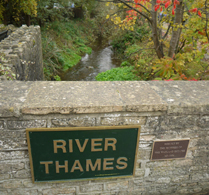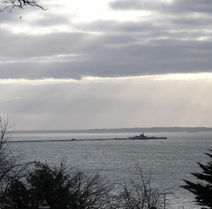Welcome
 The Guide to the Natural Thames is a “work in progress”. We shall be grateful for additional corrections and information. We have tried to make the guide accurate, but neither the River Thames Society nor the Thames Rivers Trust can accept any liability for loss or damage that might result from the guide.
The Guide to the Natural Thames is a “work in progress”. We shall be grateful for additional corrections and information. We have tried to make the guide accurate, but neither the River Thames Society nor the Thames Rivers Trust can accept any liability for loss or damage that might result from the guide.Welcome to this guide of the Thames wilderness. There are lots of beautiful and fascinating wildlife habitats along this wonderful river from its source in Gloucestershire to the sea. The river runs through the most densely urban part of Britain, and yet it provides a large chain of green spaces across Southern England, allowing everyone access to conserved nature and wildlife. The passion and knowledge of members of the River Thames Society and Thames Rivers Trust have resulted in this Guide, highlighting places you can visit that are:
- open to the public;
- near the river or its tributaries; and
- managed for conservation and wildlife.
The Guide to the Natural Thames is a “work in progress”. We shall be grateful for additional corrections and information. We have tried to make the guide accurate, but neither the River Thames Society nor the Thames Rivers Trust can accept any liability for loss or damage that might result from the guide.
 The sites are very varied and include:
The sites are very varied and include:
- meadows rich in flowering plants, largely unchanged for centuries;
- lakes and reed-beds formed from gravel pits to attract hundreds of birds;
- parks with areas restored to wilderness status;
- former industrial sites returned to natural habitats;
- mudflats and marshes in the Thames Estuary; and
- the river itself changing in character along its 215 mile (344 Km) length.
Many places can be reached by the Thames Path (part of the wildlife corridor) or other riverside paths, and some by boat. We advise you to check with maps, handbooks and other websites before you visit each site. One of the best maps, for value and simplicity, is new: the AZ Adventure map for the Thames Path, published in 2013 by Geographers’ A-Z Co. Ltd., cost £7.95. This is based on Ordnance Survey 1:25 000 scale maps and is ideal for walking by the Thames.
We have written a book “Exploring the Thames Wilderness” about the project, with maps and suggested walks that visit groups of reserves.
The chosen wildlife habitats are places where creatures and plants enjoy water and wet conditions, plus some with good views of the Thames that we love. We want to share with you the sense of green space and adventure that the river gives. Rejoice that so much of it is open to the public!
How To Save Energy and help the Environment, including the Thames
Despite being fed up with rising bills, we can be a pretty reckless bunch when it comes to wasting energy.
You could save money in loads of ways – some quick and easy and others more time consuming and costly, but all will save you money in the long term.
A brand new boiler costs on average £2300 and can save as much as £340 a year in bills. British Gas, EDF, Npower and SSE all offer free or low cost boilers and installations if you meet the criteria.
You may qualify for a free boiler if:
- Your household income is lower than £16,101
- You receive tax credits or have bad credit. See this guide from No Hassle Mobile Phones.
- You receive income-based support like pension credit and income support and are over 60, have children or have a disabled person living with you
You can find out if you qualify by contacting the Energy Savings Trust on 0300 123 1234.
Consider solar panels
You have 2 options with solar panels, you can either buy them outright or get them for free
Buy your own if:
- You can afford the up front costs, typically from £7,000 up to £15,000
- You want some protection from future energy price rises
- You want to benefit from the Feed-in Tariff, which you earn from selling electricity back to the grid. This could generate income of £21,000 over a 25 year period
Get free solar panels if:
- You don’t have the money to invest
- You are interested in saving money on your electricity bills. The annual saving is about £130
- You don’t want to think about any maintenance. Most free solar panel schemes include maintenance
- If you are a low earner, a pensioner, long-term disabled or have young children you may be entitled to help with your energy bills
- Always read the meter so that you pay for what you USE rather than what the supplier THINKS you use. Find out how to check your gas or electric meter
- LED lightbulbs, which can cost as little as £5, could save you a massive £350 a year
- Check out the Government Green Deal where after a paid assessment (around £150) you could claim cashback for energy saving improvements you make to your home or business- it’s first come first served though so be quick!
- Look for this logo when replacing your electrical or white goods, as it shows that the product is more energy efficient.
- Two of the biggest savers are actually the easiest so:
- Turn the thermostat down 1 degree and SAVE on average £70 a year!
- Turn off appliances rather than keeping them in standby mode and SAVE on average £35 a year!